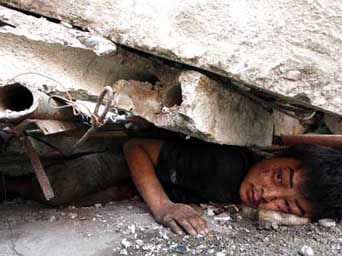Sichuan Earthquake: Did Pentagon Completely Confuse China About What It Was Up To?
… by Trowbridge H. Ford … editing Jim W. Dean
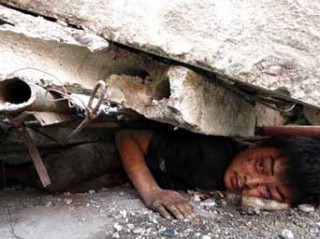 National Intelligence Director Mike McConnell’s inaugural address in June 2007 about cancelling the Misty satellite program – what Republican Congressman Peter Hoekstra, Republican Chairman of the House Select Committee on Intelligence, conveniently said was a serious compromise of national security – was a most clever move to persuade America’s opponents to think that it would not have undetected space ability to destroy their capability to defend themselves, whether it be tracking such weapons or destroying them in case of war.
National Intelligence Director Mike McConnell’s inaugural address in June 2007 about cancelling the Misty satellite program – what Republican Congressman Peter Hoekstra, Republican Chairman of the House Select Committee on Intelligence, conveniently said was a serious compromise of national security – was a most clever move to persuade America’s opponents to think that it would not have undetected space ability to destroy their capability to defend themselves, whether it be tracking such weapons or destroying them in case of war.
It seemed that America had only two such satellites according to Professor Jeffrey Richelson, author of The Wizards of Langley – one put up in 1990 and another in 1999 – and the cancellation apparently left America naked to its potential enemies, as the first one was certainly not even still airborne, as satellites only have a shelf-life of about six to eight years, and time was clearly running out on the second one if it was still in the sky.
The ending of the $9.5 billion project, way over budget, was justified because America no longer needed stealth satellites to spy on the defunct Soviets but smaller, trickier ones after the 9/11 attacks to track down difficult “…terrorist cells and underground sites for nuclear programs run by countries such as Iran and North Korea.” (Associated Press, “Spy Chief Scraps Satellite Program,” June 21, 2007)
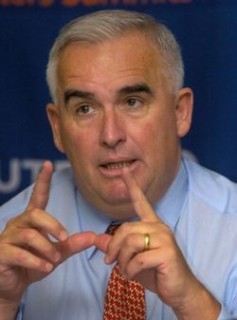
Lexington Institute’s Loren Thompson, an independent space weapons expert, confirmed that the budgetary decision was indeed a fact, while Congresswoman Heather Wilson, the top Republican on its intelligence panel, downplayed the consequences of the termination by explaining that some of the technology developed by the Misty program could be used in other ones, though she conveniently declined to provide any examples.
Of course, distinguishing stealth satellites from image and radar-seeking ones is a most false one as all satellites should have a stealth capability so that they can most effectively do what they are designed to do, whether it was to capture images of Soviet ICBMs going on line for a possible launch, or discover bunkers of some potential enemy where its nuclear weapons are stored.
Without a stealth capability, the ICBMs might only be prepared for launch during overcast conditions, or the potential enemy might move them underground which prevents them from being seen under any conditions.
The distinction, in short, seems to have been disinformation to confuse potential targets of America’s satellites from suspecting what it was preparing for.
The problems with this public demonstration was that its disclosures were largely belied by what the Air Force Secretary Michael Wynne had said months before.
In an article about Chinese ground-based lasers blinding US image and radar satellites, the usually tight-lipped Wynne said that America still had an “enormous” lead over the Chinese in space, and, consequently, the Pentagon and the American public should not be worried.
The US had at least three heavy satellites of the Keyhole-Lacrosse-Misty kind, so even if one of them became inoperable or crashed, it would still have its normal complement for dealing with the problem.
As for what the real complement of space satellites of military value the Pentagon had, there was still that infamous National Reconnaissance Office shoulder patch which showed four satellites, three apparently of an image-making variety, and one with a radar-destruction capability – what a big airborne laser could achieve.
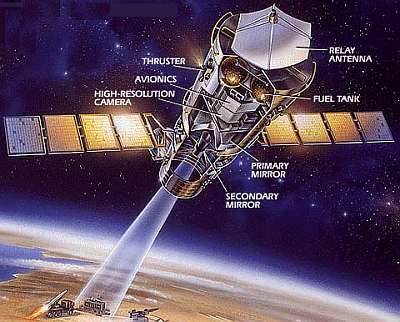
Director Donald Kerr had replaced it because it was too revealing of their offensive capabilities.
The replacement patch did not change the agency’s capability, though, only provided a less alarming cover of what it was capable of – what illustrated in spades the capability that Wynne had alluded to.
At this time, the American government was preventing the publication of Danny B. Stillman’s book, Inside the Chinese Nuclear Weapons Program – a big book about what he had learned while he was working at the Los Alamos National Laboratory, finishing up as its intelligence director.
Stillman had visited China nine times during the 1990s, obtaining a good view of what Deng Xiaoping had had rebuilt in the mountains near Chengdu after the 1976 earthquake in Tangshan – the one apparently destroyed by Soviet airborne lasers – had effectively wiped out its first nuclear establishment.
During Stillman’s visits to China, he learned all about its Institute of Nuclear Physics and Chemistry around Mianyang; Beichnan – the home of the father of China’s nuclear program, Deng Jiaxian – the nuclear research, testing, and manufacturing center way up west in the mountains at Dashita; and the nuclear underground assembly and storage facilities still further north in this most remote area.
When Stillman tried to get the courts to overturn the refusal by the CIA, the Defense Intelligence Agency, and the Pentagon to allow the publication of 23 long passages in the manuscript despite the contracts he had signed about disclosures – what, in effect, gutted the project’s attractiveness – he finally failed, the Appeals Court for the District of Columbia explaining that its publication could,
“…cause serious damage to national security, create serious risks to intelligence sources and methods, and/or cause significant strategic and diplomatic setbacks to the United States. The Court also is convinced that the disputed passages contain information that is not in the public domain.” (Danny B. Stillman v. Central Intelligence Agency)
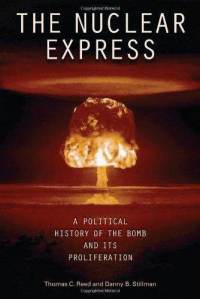 It did not require a rocket scientist to determine that the manuscript was a road map to the essentials of China’s nuclear capability.
It did not require a rocket scientist to determine that the manuscript was a road map to the essentials of China’s nuclear capability.
Its publication might ruin future efforts to mine what it was developing, and its outcome might well result in a serious setback to Chinese-American relations.
The reason why the American defense establishment fought so hard against the publication of Stillman’s manuscript was because it was most concerned about China’s possible proliferation of nuclear technology to Libya, Pakistan, North Korea and other rogue states – what could well call for focused counter measures to punish the growing Pacific power.
When it was finally learned through Colonel Qaddafi that Beijing had indeed been helping these powers gain a nuclear capability through its help in providing them with the technology for generating electricity through atomic power, Washington was understandably looking for ways of stopping the process.
China justified the covert operation in the hope of stopping India from becoming the primary player in the region by helping Pakistan and possibly others keep up with its nuclear achievements.
Any doubts about what Stillman and his associate Thomas C. Reed were up to when he visited China were completely ended when they published in 2009 many details about them in The Nuclear Express, as these quotations amply demonstrate:
“At every stop within China, Stillman found English-speakers translating U. S. documents night and day, alumni of prestigious and lesser-known U. S. schools working the problems, and a suffocating attention to every scrap of information dropped by visitors.” (pp. 127-8)
The Chinese test site area (known as Milan) is seven times larger than the U. S. Nevada Test Site. It is an electronically secure facility.” (p. 354)
“But there is another advantage to an atmospheric test ban: the privacy it gives the testing nation. Without tests in the atmosphere, competing and inquisitive neighbors cannot collect fallout debris. They will have a harder time understanding the devices tested by their rivals, it becomes easier for the testing nation to bluff.” (p. 128)
“That reactor, FBR-2, was capable of delivering an intense flux of neutrons and gamma rays within microseconds, thereby simulating the radiation emitted during an actual nuclear device detonation.” (p. 227)
“This was Stillman’s second visit to that epicenter of Chinese nuclear weapons technology (Science City), and it was far more informative than the first. He was taken to see high-explosive test facilities, chambers capable of containing the debris from the detonation of a dozen pounds of high-explosives wrapped around heavy metals simulating uranium.” (Ibid.)
“For reasons not clear, in 1999, the American door into China’s nuclear world slammed shut.” (p. 229)
“The coming of the internet has brought an awareness of wealth disparity to rural China. It has also made possible the near-instantaneous assembly of huge crowds to protest dam-building, land-seizures, or simple mismanagement. If one such protest burns out of control. a hundred million Chinese will know about it with in and hour. Could the establishment within the cities withstand such spontaneous combustion? Probably not…” (pp. 233-4)
Any understanding or concern about this turn of events was completely undermined by the finishing touches that Naomi Klein put to The Shock Doctrine: The Rise of Disaster Capitalism.
Earthquakes, especially their causes, were not even considered disasters except when she was alluding to the consequences of the Indian Ocean tsunamis in Sri Lanka.
Thanks to the role of climate change, she claimed, “disaster generation can therefore be left to the market’s invisible hand.” (p. 540)
No conspiracy theories were required for dealing with all the disasters, only how their consequences were handled. There was no more a conspiratorial dimension to disasters than thinking that the US government “…had a hand in the 9/11 attacks or took no action to stop them ‘because they wanted the United States to go to war in the Middle East’.”(p. 539)
This was all apparently written with a straight face while recounting that “…hurricanes, cyclones, floods and forest fires (were) all increasing in frequency and intensity,” (p. 525) while Lockheed Martin, the aerospace giant noted for making satellites, missiles, airborne lasers, integrated defense systems, and the like, was taking in $25 billion of taxpayer money in 2005 alone, more than the gross national product of 103 countries, and more than a good bit of the US government itself.
In recounting what it made, she somehow left them out, preferring to site its running the government’s computer systems, data management, sorting the mail, totaling up one’s taxes, running space flights, and monitoring air traffic.
The disparity between what Lockheed Martin manufactures, and what Klein said it does seems more than accidental, especially when one reads what she said about Boeing, the giant airplane, satellite, and arms manufacturer.
Boeing is now particularly known for its lasers, airborne weapons, and integrated defense systems but she made it look more like simply a civilian aviation industry which has sprouted into making a $2.5 billion project to fence off Canada and Mexico from the USA with electronic sensors, unmanned aircraft, surveillance cameras and eighteen hundred towers. (p. 555)
She even mentioned it providing $20 million to start up Neocon Richard Perle’s Trireme Partners, a venture capital firm to develop products and services for homeland security and defense. (p. 405)
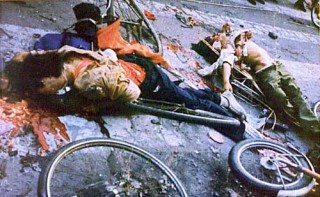
As if this wasn’t strange enough, Ms. Klein added that Deng Xiaoping’s China was primed for a bout of disaster capitalism because of its having adopted a double dose of the Chicago boys’ shock treatment – the first to open up its command economy to globalization, and the second when it crushed the protesters at Tiananmen Square in 1989.
With the eradication of popular opposition to Deng Xiaoping’s radical reforms, the Chinese leadership risked terrible blowback if there was some kind of disaster, especially if it exposed helter-skelter work that was done in the process.
The raw terror of the suppression, she concluded, kept the country quiet for awhile, but it was now increasing in incidence and vehemence. “China too,” Klein concluded, “is coming out of shock.” (p. 579)
In so concluding, Ms. Klein overstated the role of Party General Secretary Zhao Ziyang and future President Jiang Zemin had played in the showdown with the rebellious students, thanks to their meeting with Neocon rabblerouser Milton Friedman – what she thought indicated a serious division within the Party leadership over how to deal with the protests, and threatened a new civil war.
Actually, Zhao never really saw himself as the instigator of serious trouble, and didn’t realize that he had been sent into exile until years after the uprising had been suppressed.
In the process, she vastly overstated how many had been killed, two to seven thousands (p. 237), rather than the 300 to 700 – what indicated that China was less of a powder keg than she thought.
To set the stage for triggering the still necessary disaster, McConnell made his pursuit of bringing down the Misty satellite an open obsession, as I have already discussed: Knocking Down Misty Satellite Least Dangerous Option
The demonstration knockdown was to show the Chinese leadership that Washington could knock down its own, spent satellites with a missile too – what Beijing had secretly done to one of its own satellites two years previously, starting the whole process of somehow figuring how to deal with the troublesome Chinese – but more important to show that the Pentagon apparently no longer had such radar satellites to take the offensive..
After the Misty satellite was knocked down, the Air Force could have failed to keep track of its falling debris, leading to the first loss of one of its famous stealth bombers, a B-2, while it was taking off from Anderson Air Force Base in Guam, to confirm the shoot down.
At least, that was the way it seemed when the Air Force provided a video of the group of four B-2s taking off.
After the first one lifted off without difficulty, the second one was doing the same until right after liftoff when apparently a piece on the runway bounced up, hitting the trailing edge of its left wing, causing its engine to explode, and the plane quickly crashing in front of the control tower, the two pilots ejecting safely in the split-second, slam-bang operation.
It all almost seemed staged to give the impression that the Air Force was hopelessly out of control in any operations.
For more, see this link: Calling Guam! – Did Misty Debris Bring Down B-2 Stealth Bomber?
America’s covert government then sprang into high gear, hoping that its actions to help loosen Chinese control of Tibet would ultimately so shake its control in other foreign areas, especially Myanmar and North Korea, and even domestically that its continued existence would be placed in jeopardy.
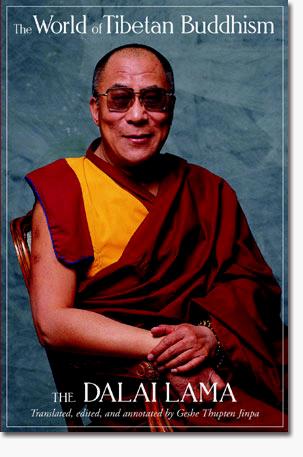 The campaign was triggered by the Dalai Lama, head of Tibet’s government in exile, condemning China’s brutal rule of the country in anticipation of the 50th anniversary of the failed coup in 1959 – what was precipitated by the successful flight of the 14th Dalai Lama when it really commenced.
The campaign was triggered by the Dalai Lama, head of Tibet’s government in exile, condemning China’s brutal rule of the country in anticipation of the 50th anniversary of the failed coup in 1959 – what was precipitated by the successful flight of the 14th Dalai Lama when it really commenced.
The current one’s speech triggered riots in Lhasa and throughout the country, resulting in the death of many ethnic Chinese residing there, and of some Tibetan protesters.
The results did not augur well for similar Chinese living in Myanmar and North Korea if further rioting occurred, thanks to unexpected events or disasters.
Tibet’s continuing plight reminded the CIA all too well about its own troubled past in the isolated country.
Its first two heroes, Douglas Mackiernan and Hugh Redmond, had died in trying to prevent the Chinese communists from occupying the country, and then promoting its rollback.
Mackiernan had been killed, beheaded, and buried in an unmarked grave by Tibetan border guards while entering the country in 1950, hoping to mobilize the Muslims in surrounding areas of western China against Mao’s advancing People’s Liberation Army.

As Ted Gup wrote in The Book of Honor: The Secret Lives and Deaths of CIA Operatives, “…a key part of his mission was to embolden and advise the very resistance…” (p. 20) which he had only alluded to in a letter to his wife.
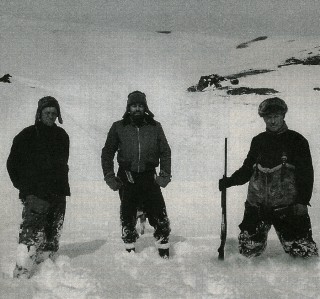
In a dedication service at CIA headquarters in 1997, DCI George Tenet revealed that MacKiernan was its first agent to die while doing foreign service for it, and his name which had not been revealed in Gup’s book.
Redmond’s mission in 1951 was to infiltrate as a foreign illegal operative, posing as a business man, the newly established communist regime with agents recruited from Shanghai in the hope of mounting resistance against it through acts of sabotage. (p. 50)
Redmond was simply rounded up, though, by the communist authorities as a security measure, and languished in prison for the next nineteen years after having been convicted of espionage in 1954.
In 1970, just when young Robert Gates – later to become DCI himself, and recently the Secretary of Defense – was starting his career with the Agency in earnest, it was shocked to learn that Redmond had finally committed suicide after a covert ransom plan, involving famous Americans, and a $1,000,000 in Agency funds, to gain his release had failed.
And then there was the plight of other agents, and missionaries who finally were freed by Beijing. China, in sum, was the biggest source of losses by the CIA, even bigger than the former USSR, and it was high time for a payback for all its setbacks – what Tenet had started with the laser-guided bombing of the Chinese Embassy in Belgrade during the campaign to force Serbia’s Slobodan Milosevic to withdraw his forces from Kosovo, due to its “faulty information”.
Gup concluded: “This was paired with scandalous accounts of Chinese spying at U.S. nuclear weapons labs and wholesale theft of America’s most sensitive secrets.” (p.371)
To give added credence to this claim about “wholesale theft of America’s most sensitive secrets”, and provide insurance against being seen as the culprit as the countdown of the attack against China neared its end, the Justice Department was putting the finishing touches on its indictment of fall guy Dr. J. Reece Roth – an expert on plasma technology, what the latest Misty satellites were equipped with to make them undetectable by Chinese radar – for spying for Beijing.
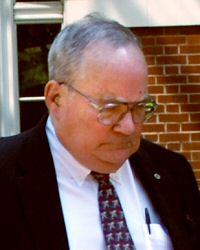
Roth was working with graduate students from China and Iran on protecting drones with plasma technology, and had visited China twice to help in the research.
Upon his return in 2006, he was arrested by the FBI, and it ultimately determined that Roth’s lack of concern about the security of his research, especially allowing his assistants to see many Defense Department articles about plasmas, constituted espionage, and, like Samuel Loring Morison back in 1985, Roth faced a long time in prison if convicted of the 18 counts.
To pull off an earthquake around China’s nuclear weapons center in Sichuan with the least cause of suspicions, the Air Force heated up with its latest Misty laser satellite Cyclone Nargis in the Bay of Bengal in late April 2008, much like it had Hurricane Katrina when it passed by Cuba in 2005, changing its direction to the northeast, and having it slam into the militarily-led Myanmar with deadly consequences.
Its junta had long been on the Pentagon’s hit list because of its close relationship with China, and its continued holding hostage of democratically elected Aung San Suu Kyi.
Its generals simply did not know what had hit it, and how to respond to its devastation, as this link recounts: topics.com/top/news/international/countriesandterritories/myanmar/cyclone
While the world was mesmerized by how the Burmese junta would react to the devastation Nargis had wrought, especially how it would treat the help offered by the French and Americans in ships lying offshore, the US Air Force turned the aim of its space weapons upon targets northwest of the Sichuan area in China, the desert where its qanats were attacked, causing a minor earthquake which loosened the connections between the Indian and Asian plates, hoping to destabilize the connections at their other end where the threats of underground facilities collapsing, landslides, rock falls, cave-ins, dams bursting, viaduct failures and the like had been increased by Chinese secret development of the area.
It was all very similar to what the USS Jimmy Carter did to the Indian-Australian plate’s connection to the Antarctic one in anticipation of the earthquake which occurred two days later where it met the Burmese one.
As the process moved to the Wenchuan area further south, the signs of an impeding but most unexpected earthquake increased, leading to all kinds of warnings to officialdom, but Beijing could not afford to heed them because of the rapidly approaching Olympic Games.
China was caught between the proverbial rock and a hard place. If it reacted vigorously to the reports – say even attempting to shoot down the offending Misty satellite, an apparent act of war – it risked the most expensive Games turning out to be a non-event.
If it did nothing, it seriously risked national security, especially if the suspected earthquake turned out to be a massive disaster. In sum, it just had to act as if nothing serious was happening, and hope that whatever happened would not threaten the regime itself.
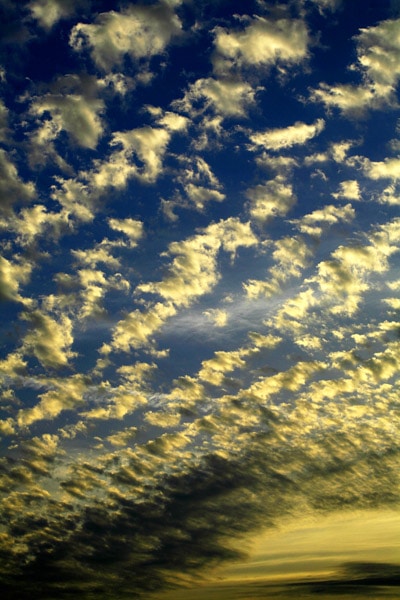
Starting on May 2nd, there were increasing reports of cloud formations coming from Sichuan, a precursor of a large earthquake occurring according to Professor Zhonghao Shou’s vapor theory about their cause, though he was surprisingly quiet about it all, leading one to suspect that the Pentagon had shut him up too by making him sign secrecy contracts in order to receive remuneration.
Ever since 1991, Papa Bush had insured that no federal employees could blow the whistle on anything the government did except waste, fraud, and waste to Congress. (Angus Mackenzie, Secrets: The CIA’s War at Home, p. 171)
A laser was apparently causing them, peppering the open, loose area with beams which increasingly shook and dried out all the underground places where water was.
The whole area was a kind of qanat system where man had helped nature in opening up the whole area to catastrophic collapse.
When the Air Force became worried that the Chinese might be on to what was going on, especially after there was a massive toad migration at Mianzhu three days before the quake – a traditional precursor of one – it had the Misty satellite activate its plasma envelope, causing the second kind of rainbow clouds, which made it invisible to Chinese radar, and permitted the beaming to continue during the daytime.
For more on the two types of cloud, etc., see this link: Earthquake cloud, Chinese photographer catch prediction 2 days before earthquake occurred
On May 12th, the devastating earthquake happened, burying everything in the area in rubble except for those places which had a firm rock foundation. Beichuan city, thanks to a rippled effect it received from the epicenter, was simply buried in rubble – what no kind of earthquake protection building would have prevented – and the Chinese government has simply left untouched as a memorial to the dead.
The underground nuclear assembly plant, and nuclear weapons storage sites high in the mountains received the same fate.
The testing site at Dashita was so severely damaged that its nuclear reactor apparently exploded during the earthquake, but was completely covered in the ensuing rubble as if the Chinese themselves had programmed its destruction as if it were simply a test.
For a picture of the devastation, see this link: Earthquake in Sichuan Province
It was the best example yet of what Naomi Klein had called “so-called Acts of God or by Acts of Bush (on orders from God),” and it is most interesting to see how the world, especially Ms. Klein, reacted to what had been wrought, as we shall see.
Editing: Jim W. Dean
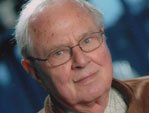
Trowbridge Ford (1929 – 2021) was the son of William Wallace Ford, the father of the US Army’s Grasshoppers.
He attended Phillips Exeter Academy, and Columbia University where he received a Ph.D. in political science after a stint in the Army’s Counter Intelligence Corps as a draftee during the Korean War, and after being discharged, worked as the sports editor and a reporter for the now-defunct Raleigh Times.
Thought academia was the thing for him. He was quite satisfied teaching all kinds of courses about European and American politics while writing his dissertation about an under-appreciated British politician, Henry Brougham, who became the Lord Chancellor of the famous Reform Government (1830-34).
At the same time, Trowbridge became most interested in the role that A. V. Dicey, a famous Oxford legal professor, played in settling the Irish question – another figure that historians didn’t think did much about. It was while he was doing research on the dissertation at the British Museum in London that President Kennedy was assassinated, and it slowly led him to take a dimmer view of academic life, especially when joined by campus protests over the growing Vietnam War. He was fired by two institutions of higher learning because of his protests against the war.
When the Vietnam War finally ended, he got involved in researching the Dallas assassination, and his first serious efforts about it appeared in Tom Valentine’s The National Exchange in 1978 – what Fletcher Prouty thought was quite good, just urging him to go higher in the Agency and the political world for the main culprits.
He slowly started doing this, ultimately deciding to retire early in 1986, planning on finishing his Brougham biography while living in Portugal. While he did this, he had made too many enemies with the White House not to be punished – first by attempts to establish that he maliciously tried to destroy Richard Nixon during Watergate by libeling him, and when he died, DCI George Tenet tried to have me killed by poisoning – what would make his death look like a suicide or a natural one.
As a result of this, once he had finally determined the cause, he moved to Sweden to not only save his skin but also investigate and write about assassinations, covert operations, ‘false flag’ deceptions, preventive wars, weapons development, and their use, etc. He passed away in 2021.
ATTENTION READERS
We See The World From All Sides and Want YOU To Be Fully InformedIn fact, intentional disinformation is a disgraceful scourge in media today. So to assuage any possible errant incorrect information posted herein, we strongly encourage you to seek corroboration from other non-VT sources before forming an educated opinion.
About VT - Policies & Disclosures - Comment Policy

